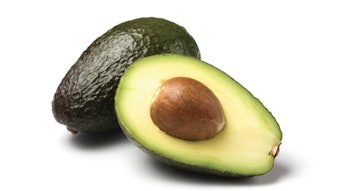
Stem cells can have a strong sense of identity. Taken out of their home in the hair follicle, for example, and grown in culture, these cells remain true to themselves. After waiting in limbo, these cultured cells become capable of regenerating follicles and other skin structures once transplanted back into skin. It's not clear just how these stem cells—and others elsewhere in the body—retain their ability to produce new tissue and heal wounds, even under extraordinary conditions.
New research at Rockefeller University has identified a protein, Sox9, that takes the lead in controlling stem cell plasticity. In a paper published on March 18 in Nature, the team describes Sox9 as a "pioneer factor" that breaks ground for the activation of genes associated with stem cell identity in the hair follicle.
"We found that in the hair follicle, Sox9 lays the foundation for stem cell plasticity. First, Sox9 makes the genes needed by stem cells accessible, so they can become active. Then, Sox9 recruits other proteins that work together to give these "stemness" genes a boost, amplifying their expression," says study author Elaine Fuchs, Rebecca C. Lancefield Professor, Robin Chemers Neustein Laboratory of Mammalian Cell Biology and Development. "Without Sox9, this process never happens, and hair follicle stem cells cannot survive."
Sox9 is a type of protein called a transcription factor, which can act like a volume dial for genes. When a transcription factor binds to a segment of DNA known as an enhancer, it cranks up the activity of the associated gene. Recently, scientists identified a less common, but more powerful version: the super-enhancer. Super-enhancers are much longer pieces of DNA, and host large numbers of cell type-specific transcription factors that bind cooperatively. Super-enhancers also contain histones, DNA-packaging proteins, that harbor specific chemical groups—epigenetic marks—that make genes they are associated with accessible so they can be expressed.
Using an epigenetic mark associated specifically with the histones of enhancers, first author Rene Adam, a graduate student in the lab, and colleagues, identified 377 of these high-powered gene-amplifying regions in hair follicle stem cells. The majority of these super-enhancers were bound by at least five transcription factors, often including Sox9. Then, they compared the stem cell super-enhancers to those of short-lived stem cell progeny, which have begun to choose a fate, and so lost the plasticity of stem cells. These two types of cells shared only 32% of their super-enhancers, suggesting these regions played an important role in skin cell identity. By switching off super-enhancers associated with stem cell genes, these genes were silenced while new super-enhancers were being activated to turn on hair genes.
To better understand these dynamics, the researchers took a piece of a super-enhancer, called an epicenter, where all the stem cell transcription factors bind, and they linked it to a gene that glowed green whenever the transcription factors were present. In living mice, all the hair follicle stem cells glowed green, but surprisingly, the green gene turned off when the stem cells were taken from the follicle and placed in culture. When they put the cells back into living skin, the green glow returned.
Another clue came from experiments performed by Hanseul Yang, another student in the lab. By examining the new super-enhancers that were gained when the stem cells were cultured, they learned that these new super-enhancers bound transcription factors that were known to be activated during wound-repair. When they used one of these epicenters to drive the green gene, the green glow appeared in culture, but not in skin. When they wounded the skin, then the green glow switched on.
"We were learning that some super-enhancers are specifically activated in the stem cells within their native niche, while other super-enhancers specifically switch on during injury," explained Adam. "By shifting epicenters, you can shift from one cohort of transcription factors to another to adapt to different environments. But we still needed to determine what was controlling these shifts."
The culprit turned out to be Sox9, the only transcription factor expressed in both living tissue and culture. Further experiments confirmed Sox9's importance by showing, for example, that removing it spelled death for stem cells, while expressing it in the epidermis gave the skin cells features of hair follicle stem cells. These powers seemed to be special to Sox9, placing it atop the hierarchy of transcription factors in the stem cells. Sox9 is one of only a few pioneer factors known in biology that can initiate such dramatic changes in gene expression.
"Importantly, we link this pioneer factor to super-enhancer dynamics, giving these domains a 'one-two punch' in governing cell identity. In the case of stem cell plasticity, Sox9 appears to be the lead factor that activates the super-enhancers that amplify genes associated with stemness," Fuchs says. "These discoveries offer new insights into the way in which stem cells choose their fates and maintain plasticity while in transitional states, such as in culture or when repairing wounds."










